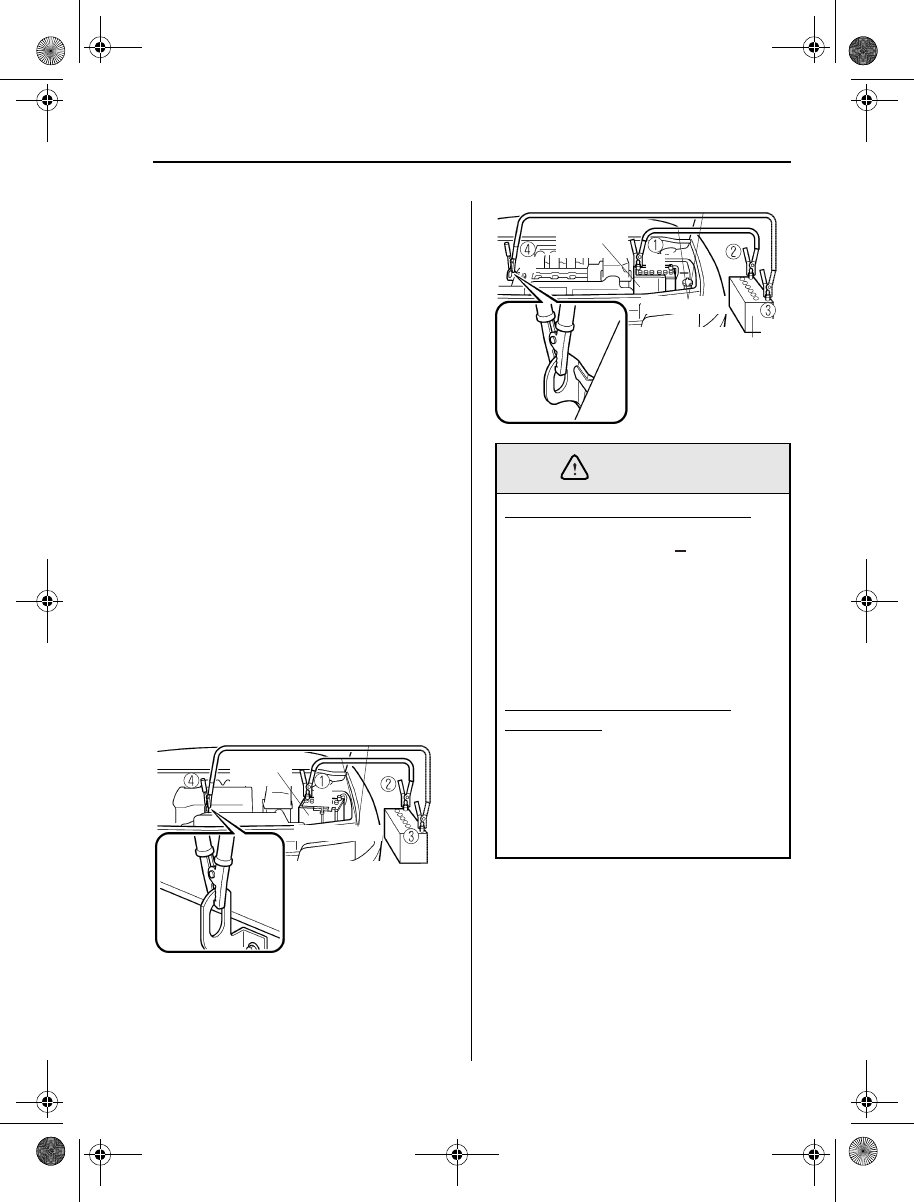
7-13
In Case of an Emergency
Emergency Starting
Form No. 8Q50-EA-01G
1. Make sure the booster battery is 12 V
and that its negative terminal is
grounded.
2. If the booster battery is in another
vehicle, don’t allow the vehicles to
touch. Turn off the engine of the
vehicle with the booster battery and all
unnecessary electrical loads in both
vehicles.
3. Connect the jumper cables in the exact
sequence as in the illustration.
• Connect one end of a cable to the
positive terminal on the discharged
battery (1).
• Attach the other end to the positive
terminal on the booster battery (2).
• Connect one end of the other cable
to the negative terminal of the
booster battery (3).
• Connect the other end to a solid,
stationary, exposed metallic point
(for example, the engine hanger)
away from the discharged battery
(4).
4. Start the engine of the booster vehicle
and run it a few minutes. Then start the
engine of the other vehicle.
5. When finished, carefully disconnect
the cables in the reverse order
described in Step 3.
Discharged
battery
Jumper cables
Booster
battery
Connect cables in
numerical order
and disconnect in
reverse order.
(+)
(-)
(+)
(-)
2.0-liter engine
Connecting to Negative Terminal:
Connecting the end of the second
cable to the negative ( ) terminal
of the discharged battery is
dangerous.
A spark could cause the gas around
the battery to explode and injure
someone. Connect the cable to a point
away from the battery.
Connecting Jumper Cable to a
Moving Part:
Connecting a jumper cable near or to
a moving part is dangerous. The cable
could get caught when the engine
starts and cause serious injury. Never
connect a jumper cable to or near any
part that moves.
Booster
battery
Discharged
battery
Jumper cables
(+)
(-)
(+)
(-)
2.5-liter engine
Connect cables in
numerical order
and disconnect in
reverse order.
WARNING
J94S.book Page 13 Saturday, June 23, 2001 1:04 PM


















